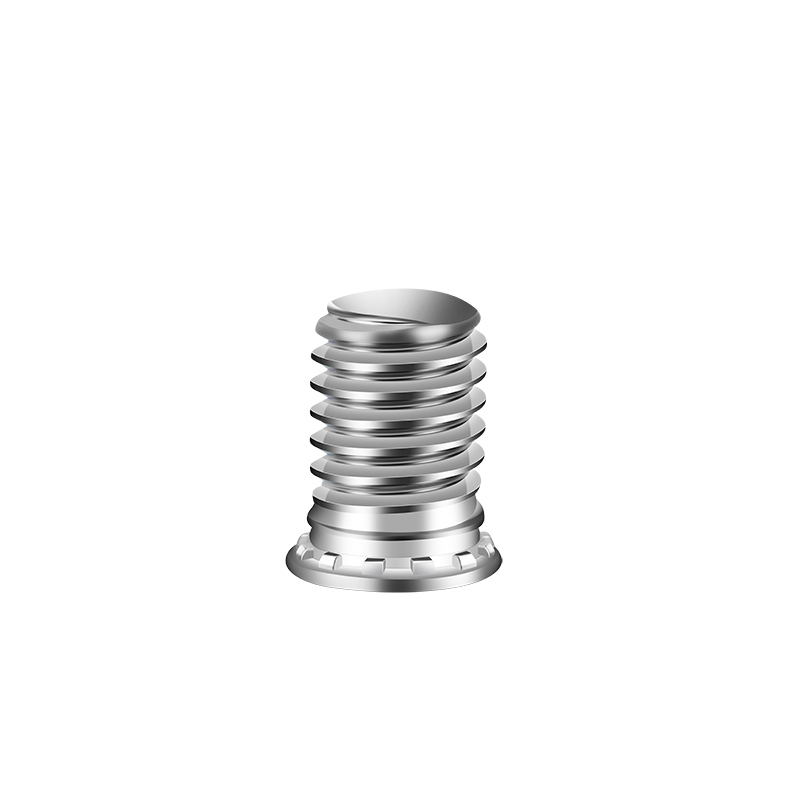Stainless Steel Pressure Riveting Screws are specialized fasteners combining the installation efficiency of rivets with the removable/reusable capability of screws. These components feature:
Material Composition: Typically manufactured from AISI 304 (1.4301) or AISI 316 (1.4401) Stainless Steel, providing ≥18% chromium and 8-10.5% nickel content for superior corrosion resistance.
Mechanical Properties: Yield strength ranging 205-310 MPa (304) to 240-310 MPa (316), with tensile strength between 515-690 MPa (304) and 515-620 MPa (316).
Surface Finish: Standard finishes include Ra 0.8-1.6μm mechanical polish or electropolished surfaces reducing friction coefficients to μ=0.15-0.20.
Temperature Resistance: Continuous service from -200°C to +800°C (304) and -200°C to +1000°C (316) in oxidizing environments.
Installation Parameters: Require 3-12 kN axial force for proper setting, creating 0.2-0.5mm material deformation for optimal joint integrity.
The unique M4-M12 thread sizes combined with 6-20mm grip ranges allow these fasteners to accommodate material stack-ups from 0.5mm sheet metal to 12mm composite panels while maintaining ≥90% thread engagement.

In rail vehicle manufacturing, these screws withstand EN 12663-1 dynamic loads while providing:
Vibration resistance up to 50Hz frequency at 5g acceleration
Fatigue life exceeding 107 cycles at R=0.1 stress ratio
EMI shielding through continuous metal-to-metal contact
Compliant with ISO 13485 standards for:
Autoclavable up to 134°C for 18 minutes
Passing ASTM G48 crevice corrosion testing
Maintaining Ra ≤ 0.4μm surface finish for cleanroom compatibility
Certified to DNVGL-RU-0171 for offshore applications:
Resisting 5000hr salt spray (ASTM B117)
Maintaining torque retention after 1000 thermal cycles (-40°C to +80°C)
Providing ≥25 years service life in splash zones
Meeting FDA 21 CFR 178.2010 requirements:
Zero measurable lead content (<0.01ppm)
Withstanding daily CIP cleaning with 3% NaOH at 80°C
Maintaining hygienic surfaces with ≤0.8μm Ra finish
Use calibrated tools applying ±5% torque accuracy
Maintain 0.05-0.10mm hole clearance
Apply 0.2-0.5g molybdenum disulfide paste for high-temperature applications
Check for fretting corrosion every 5000 service hours
Verify clamp load with ultrasonic measurement (±5% accuracy)
Monitor galvanic potential differences ≤200mV in mixed-material assemblies
Passivate per ASTM A967 nitric acid method
Apply 5-10μm PTFE coating for chemical resistance
Maintain relative humidity below 60% RH in storage
Ultrasonic clean in 5% citric acid at 60°C
Repair threads with 60° chasing dies
Discard fasteners showing >10% torque reduction from baseline
For critical applications, implement EDX analysis every 24 months to verify material composition, and conduct metallographic examination after 10,000 thermal cycles to detect sensitization in HAZ regions.
Previous: Pem Clinch Nut